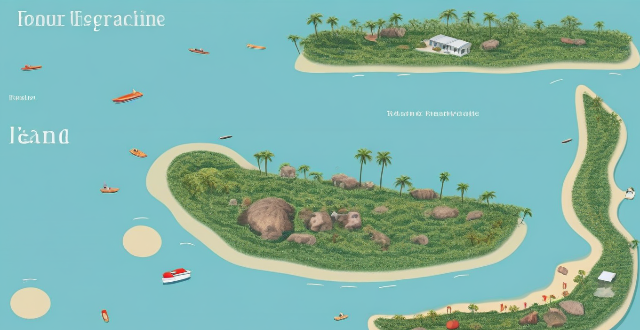The text provides a comprehensive guide on how small island nations can develop successful climate adaptation plans to protect their communities and ecosystems from the impacts of climate change, which include sea-level rise, storm surges, and extreme weather events. The suggested steps are grouped into several categories: assessing risks and prioritizing actions; building resilience through infrastructure; enhancing ecosystem resilience; community engagement and education; developing policies and legislation; finance and funding mechanisms; and monitoring and evaluation. Each category offers specific strategies and actions that small island nations can take to create effective climate adaptation plans.

How Can Small Island Nations Develop Successful Climate Adaptation Plans?
Introduction
Small island nations are particularly vulnerable to the impacts of climate change, such as sea-level rise, storm surges, and extreme weather events. To protect their communities and ecosystems, these nations need to develop effective climate adaptation plans. Here's how they can do it:
Assessing Risks and Prioritizing Actions
*Identify Key Vulnerabilities*
- Conduct a thorough assessment of the most pressing climate risks facing the nation.
- Engage local communities in the process to ensure all perspectives are considered.
*Prioritize Adaptation Measures*
- Determine which areas require immediate action based on risk level and potential impact.
- Allocate resources accordingly to address high-priority issues first.
Building Resilience through Infrastructure
*Protective Structures*
- Construct sea walls, breakwaters, and other coastal defenses to mitigate storm surges.
- Elevate critical infrastructure like hospitals and schools above projected flood levels.
*Sustainable Infrastructure Development*
- Use resilient materials and designs for new buildings.
- Retrofit existing structures to withstand extreme weather conditions.
Enhancing Ecosystem Resilience
*Conservation and Restoration*
- Preserve and restore natural habitats like mangroves and coral reefs that provide natural buffers against storms.
- Promote sustainable fishing practices to maintain marine ecosystem health.
*Biodiversity Management*
- Implement programs to protect and manage endangered species.
- Create wildlife corridors to allow species migration in response to changing environments.
Community Engagement and Education
*Public Awareness Campaigns*
- Educate residents about climate risks and adaptation strategies.
- Use media, workshops, and public meetings to disseminate information.
*Capacity Building*
- Train local personnel in disaster preparedness and response.
- Encourage community-based adaptation initiatives led by local leaders.
Developing Policies and Legislation
*Climate-Resilient Policies*
- Create policies that promote sustainable development and reduce greenhouse gas emissions.
- Integrate climate adaptation into national planning frameworks.
*Legal Frameworks*
- Establish laws that mandate climate-resilient construction standards.
- Provide legal support for conservation efforts and resource management.
Finance and Funding Mechanisms
*Accessing International Finance*
- Seek funding from international climate funds and donors.
- Collaborate with international organizations on adaptation projects.
*Domestic Financing Strategies*
- Utilize domestic resources through taxes, bonds, or other financial instruments.
- Encourage private sector investment in climate-resilient projects.
Monitoring and Evaluation
*Tracking Progress*
- Regularly monitor the effectiveness of adaptation measures.
- Use indicators and benchmarks to measure progress towards adaptation goals.
*Learning and Adapting*
- Learn from successful adaptation practices in other small island nations.
- Adjust strategies based on lessons learned and changing climate conditions.
Conclusion
By following these steps, small island nations can create comprehensive climate adaptation plans that build resilience, protect communities, and preserve ecosystems. It's crucial for these nations to act proactively, leveraging international support while fostering local innovation and community involvement.